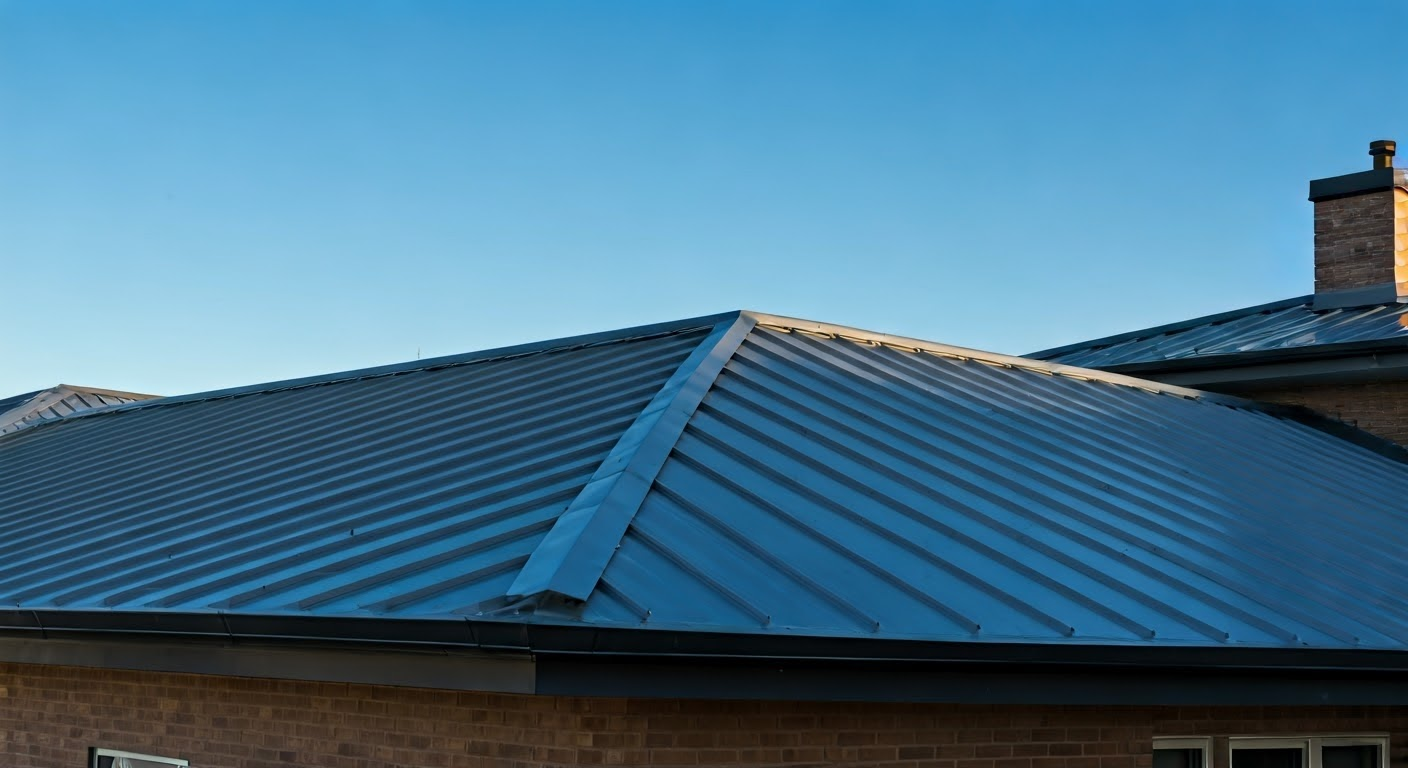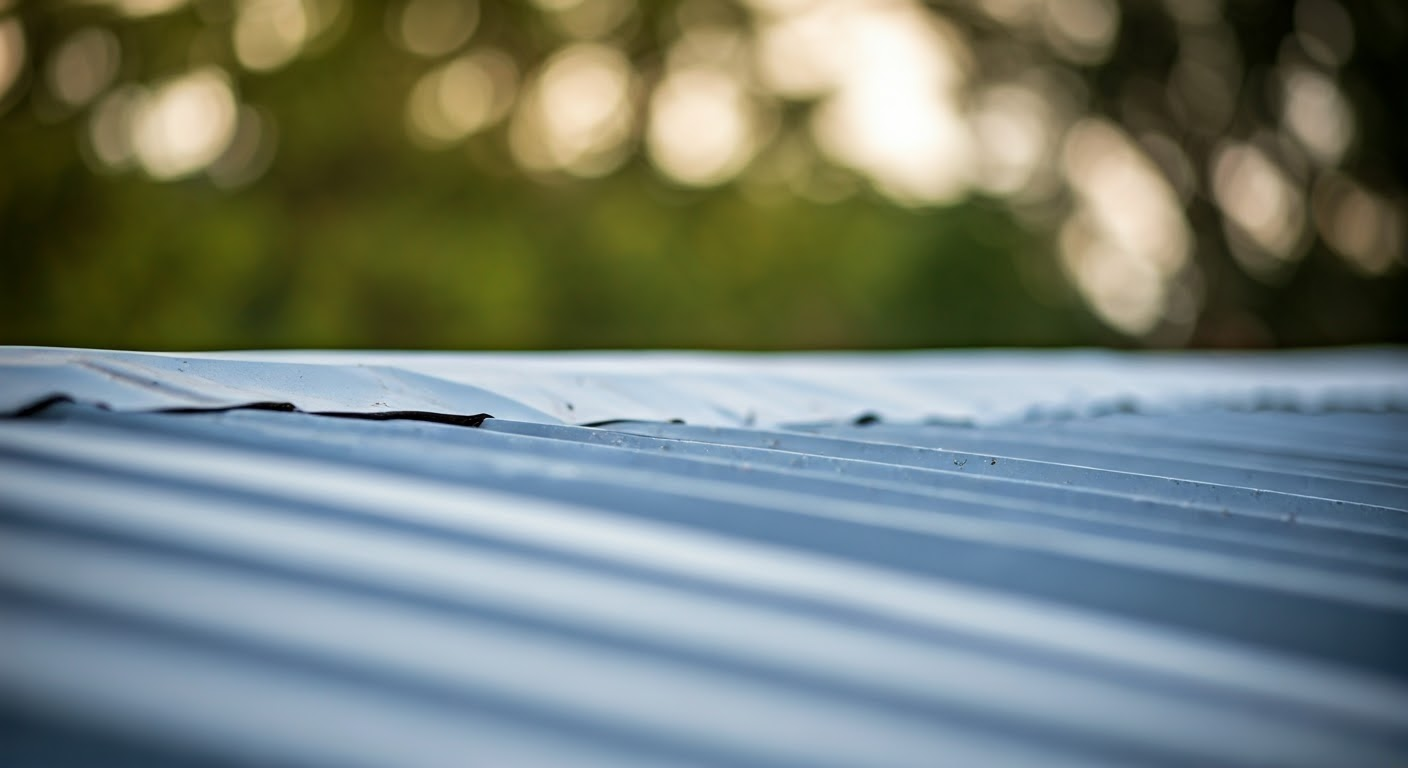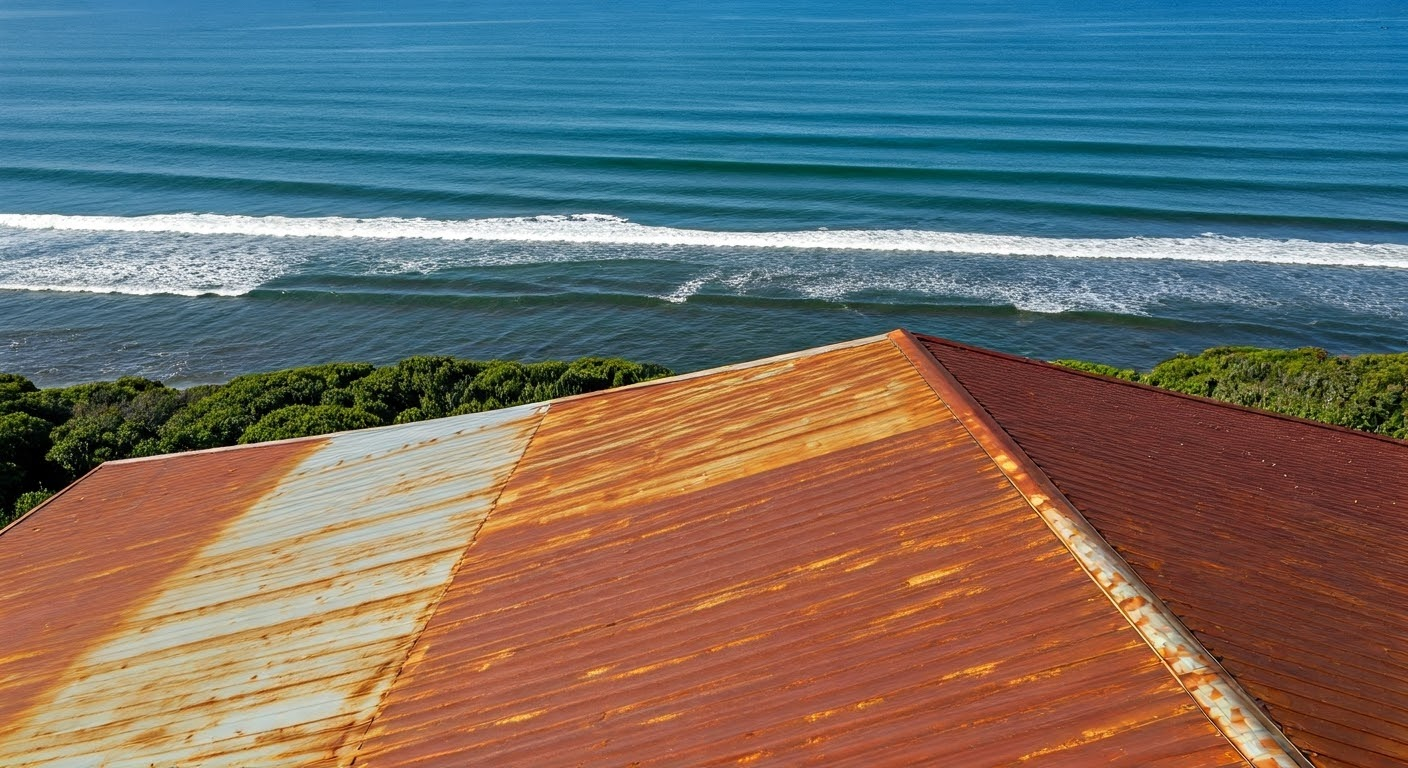
Key Highlights
- Metal roofs, while durable and long-lasting, might not be suitable for every homeowner or situation.
- This article explores scenarios where opting for alternative roofing solutions might be more practical.
- Factors to consider include susceptibility to denting, noise during storms, and environmental limitations.
- Installation complexities, higher upfront costs, and potential insurance hurdles are also discussed.
- Ultimately, the goal is to empower homeowners to make informed roofing choices aligned with their needs and circumstances.
Introduction
Choosing the right material for your new roof is a major decision. While metal roofing has surged in popularity, it’s essential to weigh its pros and cons carefully. While celebrated for its longevity and sleek aesthetics, there are situations where metal roofing might not be the best decision. This article will explore instances where alternative roofing materials might be a more practical and budget-friendly option.
Key Disadvantages of Metal Roofs

While metal roofs offer numerous benefits, such as exceptional lifespan and energy efficiency, they also come with inherent disadvantages that might make them unsuitable for certain homeowners. Recognizing these potential drawbacks is crucial in making an informed decision.
Factors like susceptibility to denting, noise during downpours, and compatibility with specific environments can influence the suitability of metal roofing for your home. Considering these limitations can prevent future hassles and ensure your roof effectively serves its purpose for years to come.
Prone to Denting and Cosmetic Damage
Although known for their robust structure, certain types of metal roofs can be susceptible to denting and cosmetic damage. While steel roofs exhibit remarkable strength, softer metals like aluminum and copper are more prone to dents from hail or falling tree branches.
Such impacts can not only mar the visual appeal of your roof but also compromise its structural integrity over time. If you live in an area prone to hailstorms or have large trees surrounding your home, the risk of dents and cosmetic damage should factor into your roofing decision.
Carefully evaluating the hail risk in your region and considering the proximity of trees to your structure will provide a clearer picture of the potential for damage. Opting for more resilient metal roofing options, like steel, or choosing an alternative roofing material may be advisable in such situations.
Noise Concerns During Heavy Rain or Hail
One common concern associated with metal roofs is the amplified sound of rain or hail. While some find the rhythmic sound of rain hitting a metal roof soothing, others might find it bothersome, especially during heavy downpours or hailstorms. The sound amplification occurs due to the reverberating nature of metal.
The extent of noise, however, can vary based on the quality of installation and the type of insulation used. Proper installation techniques involve using sound-dampening underlayment materials that can significantly minimize the drumming sound.
If you are particularly sensitive to noise or reside in a region with frequent heavy rainfall, addressing this aspect during the planning and installation phase is crucial. Consult with experienced roofing contractors who can advise on the best soundproofing methods and materials suitable for your specific needs.
Environmental and Climatic Limitations

While metal roofing performs exceptionally well in many climates, certain environmental and climatic conditions may limit its effectiveness and longevity. Considering these factors is vital before making a decision.
Coastal regions, for instance, can pose challenges due to the corrosive nature of salt air. Certain metal types may be more prone to rust and corrosion, impacting their durability and lifespan in such environments.
Not Ideal for Coastal Environments Due to Corrosion
Living near the coast offers scenic views and refreshing breezes, but it also exposes your home to harsh elements, particularly salt air. Salt air can accelerate corrosion in metals, making some types of metal roofing unsuitable for coastal environments.
While materials like aluminum are inherently rust-resistant, others, such as steel, require protective coatings like galvanization to withstand the corrosive effects of salt. Over time, however, even these coatings can deteriorate, leading to rust and compromising the structural integrity of the roof.
When choosing a metal roof for coastal areas, specific metals like aluminum, copper, or zinc, known for their corrosion resistance, are preferred. If choosing steel, ensure it’s galvanized or treated with protective coatings specifically designed for coastal climates. Regular inspections and maintenance are also crucial for preserving the longevity of metal roofs in such environments.
Ineffective in Extremely Cold Regions
Metal roofs are renowned for their energy efficiency, but their effectiveness can be challenged in extremely cold regions. While metal roofs excel at reflecting heat away from the house in warmer climates, they tend to lose heat rapidly in frigid temperatures, impacting overall energy efficiency.
In regions with heavy snowfall, the accumulation of snow and ice on metal roofs poses another challenge. While some homeowners appreciate the natural shedding ability of metal roofs, the repeated freezing and thawing cycles can stress the metal, potentially causing expansion and contraction issues.
If you live in an area with harsh winters and frequent snowfall, consider these factors carefully. Engaging experienced roofing contractors who understand the challenges posed by extreme cold is essential. They can advise on appropriate insulation techniques and address concerns related to snow and ice buildup.
Installation Challenges and Cost Implications
While the durability and longevity of metal roofs are attractive, the installation process presents unique challenges and cost implications that must be factored into your budgeting and planning.
One primary consideration is the specialized expertise required for installing metal roofs compared to traditional shingles. This often translates to higher labor costs and the need for specialized tools and equipment, affecting the overall project expenses.
High Initial Investment Compared to Other Roofing Materials
While considering the long-term benefits of metal roofing, it’s essential to acknowledge the significantly higher initial cost compared to traditional asphalt shingles. The upfront investment involved can be a deterrent for homeowners working with strict budgets.
Metal roofing materials generally cost more per square foot than asphalt shingles, and the installation process often requires specialized labor and techniques, further adding to the overall expenses.
Balancing the allure of a durable, long-lasting metal roof against the budgetary constraints is crucial. While a metal roof might be a worthwhile investment in the long run, explore financing options or weigh the benefits against your immediate financial limitations.
Specialized Installation Requirements
Metal roof installation demands a higher level of expertise and precision compared to traditional roofing materials. Factors such as thermal expansion and contraction of metal and the intricacies of seam metal roofs necessitate specialized knowledge and skills.
Proper installation ensures the roof panels are securely fastened, preventing leaks and structural issues. Inadequate fastening can lead to problems like oil canning, where the panels deform and affect the roof’s appearance and performance.
This table highlights the specialized nature of metal roofing installation:
| Aspect | Description |
|---|---|
| Fasteners | Specific types and placement crucial to prevent leaks and ensure longevity |
| Seam Management | Requires skilled labor for proper overlapping, sealing, and weatherproofing |
| Thermal Expansion | Techniques for accommodating expansion and contraction vital to prevent buckling |
Potential Issues with Insurance and Warranties
Navigating the realm of insurance and warranties with metal roofs requires careful consideration and a thorough understanding of your coverage.
From potential complications with homeowner’s insurance due to material type and location-specific requirements to the limitations and specific clauses within manufacturer warranties, being well-informed is key to maximizing protection and avoiding unforeseen issues.
Insurance Complications Due to Material and Location
While metal roofs can offer advantages in terms of durability and fire resistance, their impact on homeowners insurance can be nuanced. Insurance companies consider various factors when assessing risk and determining premiums, and metal roofing can sometimes introduce complexities.
In certain cases, some insurers might view metal roofs as a higher-risk investment, especially in regions prone to hailstorms. The rationale lies in the potential for cosmetic damage, even with impact-resistant coatings. Consequently, premiums could be higher compared to homes with traditional asphalt shingles.
Furthermore, if you live in a community governed by a homeowners association (HOA), there might be restrictions or guidelines regarding the type and style of roofing allowed. Before finalizing your decision, it’s crucial to check both your insurance policy and HOA regulations to ensure compliance.
Limited or Specific Warranty Coverage
While metal roof manufacturers often tout impressive warranties, delving into the fine print reveals that coverage may be limited or have specific conditions. Understanding these limitations is crucial to avoid potential disappointments and disputes down the line.
A significant factor is the differentiation between workmanship and material warranties. While material warranties typically cover defects in the metal itself, workmanship warranties cover the installation aspects. It’s essential to clarify the duration and coverage of both warranties offered.
Some warranties might also have stipulations related to weather events. Hail damage, for instance, might not be covered or could have limited coverage depending on the size of the hailstones. Scrutinizing the warranty terms and seeking clarification from your roofing contractor will ensure a comprehensive understanding of your coverage.
Conclusion
In conclusion, taking care of your mental health is crucial for overall well-being. By maintaining a healthy sleeping routine, being mindful of your consumption, engaging in therapeutic activities, and cultivating a positive mindset, you can significantly improve your mental health. Remember, seeking help and support when needed is a sign of strength, not weakness. Your mental health matters, so prioritize self-care and make it a priority in your daily life.
At Metal Roof Mobile AL, we ensure our clients receive the best possible outcomes. Our commitment to quality workmanship and customer satisfaction is unwavering, making us the top choice for residential Roofing services in our community.
Frequently Asked Questions
Does a metal roof lower property insurance rates?
Metal roofs can sometimes positively impact property insurance rates. Their fire resistance and durability might lead to discounts. However, factors like the value of your home, location, and specific insurance policies ultimately determine the impact on premiums.
Can a metal roof be installed over an existing roof without removal?
In some cases, a metal roof can be installed over an existing roof, particularly asphalt shingles. However, this depends on local building codes, the condition of the existing roofing, and the recommendations of a qualified roofing professional.
